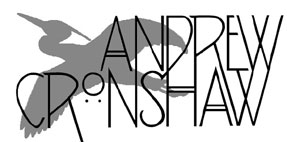
- Andrew Cronshaw website -
- Andrew Cronshaw MySpace -
- Cloud Valley Music website -
- Andrew Cronshaw website -
- Andrew Cronshaw MySpace -
- Back to Reviews Introduction page -
Written in Folk Roots issue 169, 1997
TOORAMA
Mordvin Songs
Mipu MIPUCD 502 (1997)
VARIOUS ARTISTS
Lituanie - Le Pays Des Chansons
Ocora C 600005 (1997)
Mordvin Songs is, as far as I know, the first commercial recording made
for Western release of the traditional music of the Republic of Mordva,
south-east of Moscow.
Toorama is a seven-member male vocal group,
performing the music it collects largely from the villages of the Erzyan people.
Typically the tunes are pentatonic, a lead voice followed after a few notes by
the group singing in a robust, almost plain-chant way, but unlike plain-chant
there’s not only unison but also octaves and fifths, centring on an implied
drone, with the tune ending either on the drone note or a tone below. It has
that thick, vibrant sound that I remember as my dominant impression when I first
heard the Watersons singing Three Score And Ten. Rhythms are a series of
steady one-beats with ties and occasional linking pairs of half-beats, which
could add up for the numerically-inclined to varying bars of five or six.
The songs speak of horses, weddings, storks, a
boy hiding from invading armies, nature, the oven fairy... Indeed, if there’s a
prevailing lyrical spirit it’s of beauty constantly threatened by war - like a
real-life sound-track to that rarely-shown gem of a film The Last Valley.
A 1200 Km crow-flight west from Mordva and you’re
in the largest and southernmost of the states on the Baltic Sea, Lithuania.
Ocora/Radio France’s release of recordings made for Lithuanian Radio between
1958 and late 1995 shows that despite the formal disciplining of approved
aspects of folklore into the “colourful folkloric spectacle” state ensembles of
the former Soviet Union, people continued to sing, and play fiddle, kankles (the
Lithuanian equivalent of Finnish kantele), accordion, bandoneon and other
instruments in a variety of regional styles, and were recorded for the radio’s
archives.
There’s the polyphony, vocal and instrumental, of
the sutartinčs of the Aukštaiciai people of the north-west, the minor-key
monophonic singing of the Dzukai in the south-east, field-working songs, wedding
songs, dance tunes and more here, performed sometimes by organised groups but
all with the stamp of the real thing. During the repressive Soviet times the few
good recordings of Baltic traditional music released were mostly on French
labels, and now that things have changed it’s good to see Ocora continuing to
make this remarkable music available.
© 1997
Andrew Cronshaw
You're welcome to quote from reviews on this site, but please credit the writer
and fRoots.
Links:
fRoots - The feature and
review-packed UK-based monthly world roots music magazine in which these reviews
were published, and by whose permission they're reproduced here.
It's not practical to give, and keep up to date,
current contact details and sales sources for all the artists and labels in
these reviews, but try Googling for them, and where possible buy direct from the
artists.
CDRoots.com in the USA, run by
Cliff Furnald, is a reliable and independent online retail source, with reviews,
of many of the CDs in these reviews; it's connected to his excellent online magazine
Rootsworld.com
For more reviews click on the regions below
NORDIC
BALTIC
IBERIA (& islands)
CENTRAL & EASTERN EUROPE, & CAUCASUS
OTHER EUROPEAN AMERICAS OTHER, AND WORLD IN GENERAL
- Back to Reviews Introduction page -